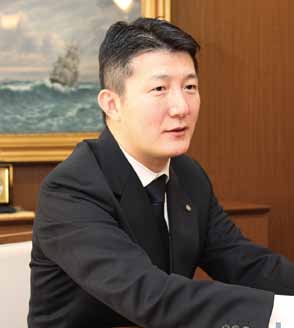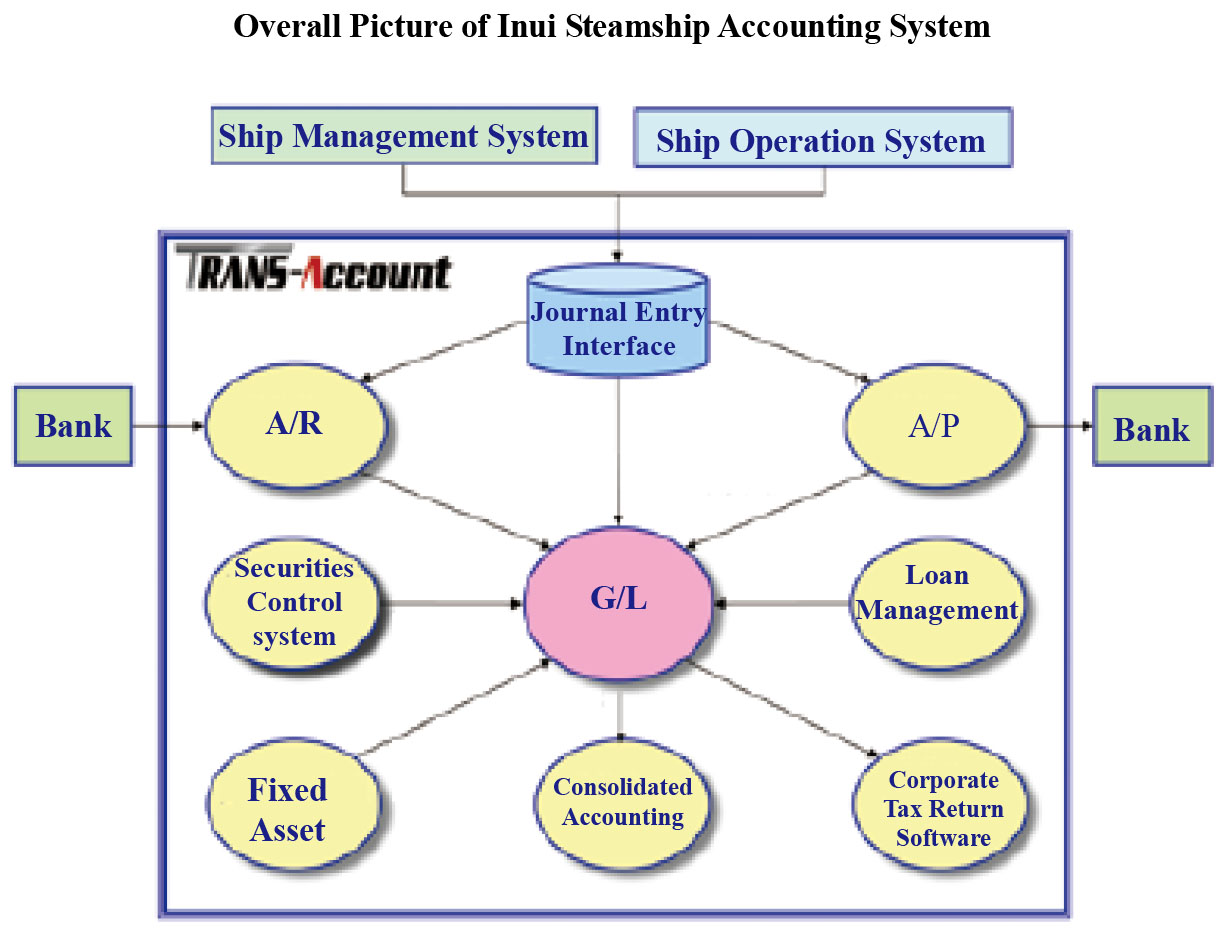Successful stories were appeared in Japanese monthly trade magazine “KAIUN” by cooperation of existing clients.
The contents were made at the time of publication.
Mr. Takashi Inui, President and General Manager, Corporate Management INUI STEAMSHIP CO., LTD. (The contents were made at the time of publication.)

Inui Steamship, which celebrates its 110th anniversary in April 2014, is engaged in overseas shipping services through a handy bulk carrier fleet. In 2011, it introduced TRANS-Account, a strategic accounting system for shipping companies, and improved the efficiency of accounting service remarkably. We asked Mr. Takashi Inui, President and General Manager, Corporate Management Department, for the key points.

Kobe Office
3F Sannomiyaazuma Bld., 4-1-2 Kumoi-Dori, Kobe-City Chuo-Ku, Hyogo-Prefecture, 651-0096. Japan
TEL: (+81) 078-232-1111
Shizuoka Office
4F Sizuoka yaizu sinyoukinko otemachi Bld., 3-11 Otemachi, Shizuoka-City Aoi-Ku, Shizuoka-Prefecture, 420-0853. Japan
TEL: (+81)-054-204-3005
Singapore Office
AIS MARITIME SOLUTION SINGAPORE PTE. LTD.
143 Cecil Street, #03-01 GB Building,
Singapore 069542
TEL: (+65) 6220-0735
Receivable Management – A Complete Billing Platform
What are Receivables? Receivables are the dues a customer owes to the business, in exchange of services s/he gets from.....
Read MoreFixed Asset Schedule
This fixed assets schedule is important to maintain because it is highly critical in understanding the accounts of the company......
Read MoreBunker Calculation, Formula and Example
Such reading and evaluations require formula-oriented calculations while considering those dynamic factors and varying inputs. Bunker calculation is one of.....
Read More